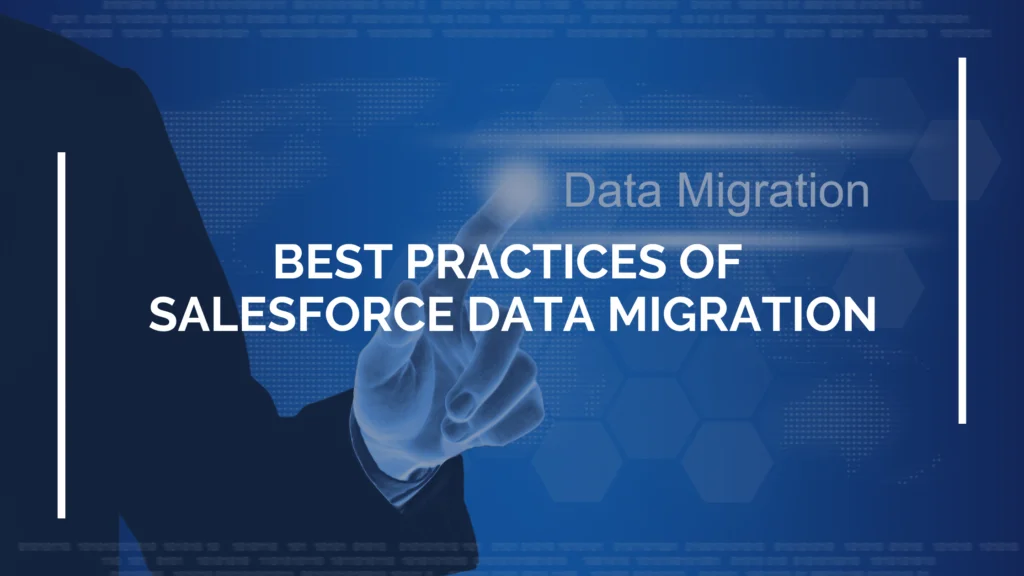
Best Practices of Salesforce Data Migration
Do you have a requirement to migrate data from your legacy system? Salesforce Data Migration can be the right answer. When you choose a Salesforce Data Migration service, the first thing that comes to your mind is to avoid any kind of data loss. Data is valuable and useful for your organization and transferring the data is not an easy task-in-hand. So, you must be careful with Data Migration with proper planning in place.
However, there are some critical points that you must remember while using Salesforce Data Migration. You must try to avoid mistakes at any cost, without any chance of jeopardizing the sensitive customer data.
It is also critical to select the right tools for Salesforce Data Migration such as Native Salesforce solutions from third-party or your in-house developers. The tools can help to automate the Salesforce Data Migration process. Everything depends on the data quality and the source system and the Salesforce configurations. You must try to avoid the more tedious tasks that consume your time to avoid manual fixes and changes.
If you want to efficiently carry out Salesforce Data Migration services for your organization then you need to follow some best practices. In this post, we will highlight some of these best practices.
What are the Best Practices for Salesforce Data Migration Services?
- Identify the Required Fields
- Decide on the Migration Order
- Data Migration Workbook
- Pre-data Considerations on Migration
- Data Load Considerations
Identify the Fields
First and foremost, it is important to mark out the required, optional and system-generated fields for the Salesforce Data Migration process. It is also equally important to mark the business rules as well as the legacy ids.
Decide on the Migration Order
The order of migration in Salesforce is decided by the relationships that exist between the objects and the dependencies. For example, requests to be followed for accounts with owners and opportunities related to the accounts are:
- Load Clients
- Load Accounts
- Load Openings
Lookups and related lists in Salesforce help to express the relationships.
Data Migration Workbook
All throughout the Data Migration process, it is necessary to create and follow a Data Migration workbook. The workbook consists of the data mapping for those objects involving the migration process. In addition to this, it is possible to personalize the workbook and that depends upon your business requirements. It comes in the form of a single format and a tab for each of the mapping objects with a DM checklist and storage requirements as well.
Pre-data Considerations on Migration
Firstly, there is a need to create and set up a user with a System Administrator profile for the Data Migration to work out. Next, you carry out the system configuration and set up roles or profiles. It is important to store the legacy IDs for a record in Salesforce for efficient troubleshooting at a later stage. The picklist values must be defined and define the mapping needs as well.
Data Load Considerations
Before you start to load the data, you must carry out data cleaning and optimization as well. It is usually a best practice to normalize, clean and de-duplicate and validate the source data before the movement. If you have a slow loading then it becomes all the more necessary to check out on certain things.
It becomes possible to safely defer the processes with clean data. This will ensure data protection for any sort of data entry errors for batch loading or even during daily operations. These operations add considerable time to inserts, all the more applicable for complex triggers.
Common Data Migration Issues
The legacy systems are not perfect. Businesses often face some common issues. The primary issue often is due to poor data quality. Other than this some other Salesforce Data Migration issues are:
- Lack of resources and tools.
- Fail to convert data into a new format and structure.
- Track the effect of existing data, as well as the validations, and processes to the newly migrated data
- Track the unexpected effect on recently migrated data to Salesforce that is already in use
- Unforeseen data issues and exceptions such as lack of data organized in a suitable manner that results in incorrect migration or data within a certain date frame.
- Issues related to access and permissions.
Summary
Salesforce Data Migration Services help you to transfer the data from one platform to another, from say your legacy system to Salesforce with no data loss. It is quite a challenging task. But it requires a lot of alertness on your part to avoid any kind of errors. There are many powerful tools from Salesforce and AppExchange. Sometimes these tools can be developed by your in-house team or just changes incorporated into the existing tools.
AnavClouds Software Solutions is one of the top-notch Certified Salesforce Consulting partners based in the US and has a team of certified Salesforce CRM consulting experts who have the expertise in the implementation of many projects. AnavClouds Software Solutions has a delivery centre in India, offering companies cost-efficient and fast Data Migration services at Indian rates to help your organization with a secure data transfer.


